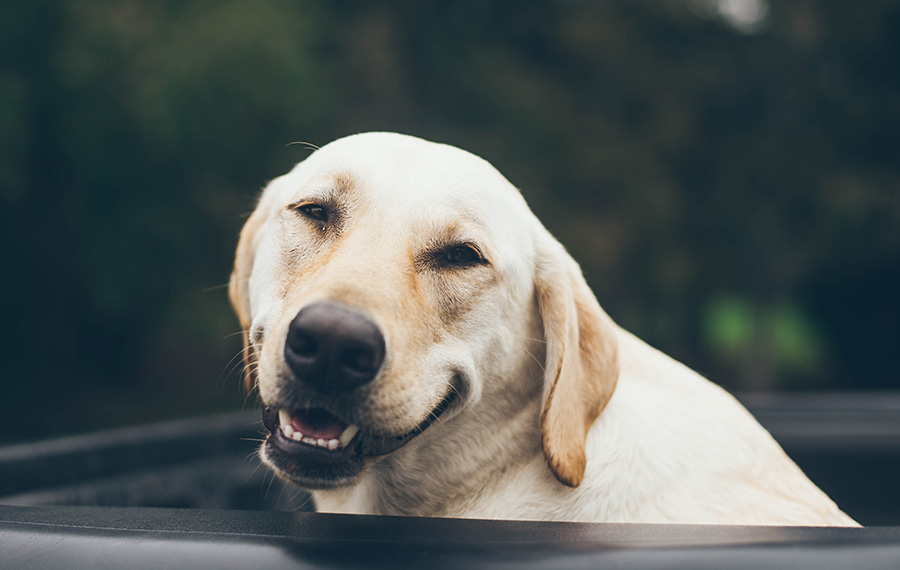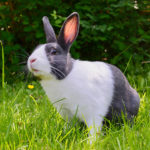Preventative Dental Care for Pets
80% of dogs and 70% of cats over 3 years old have some form of periodontal (dental) disease. Dental disease causes bad breath (halitosis) and pain, it is also a source of infection and can make your pet seriously ill, as bacteria associated with poor dental care can eventually enter the bloodstream and damage the kidneys, heart and other organs.
Progression of dental disease
1. Plaque – When bacteria living on the remnants of food in the mouth combine with saliva and food debris in the channel between the tooth and gums, plaque begins to accumulate. Typically plaque will collect on the outside of the teeth, especially the canines, upper pre-molars and molars.
2. Tartar/Calculus – If plaque is not removed it combines further (within three to five days) with minerals in the saliva and hardens to form tartar, or calculus. This tartar can then irritate the gums causing gingivitis, noticeable as a reddening of the gums close to the tooth. It’s also a major cause of halitosis, or bad breath.
3. Periodontal disease – Eventually tartar builds up under the gum line, separating the deep bony structures of the jaw from the teeth to form pockets and abscesses that encourage even more bacterial growth. The damage is now irreversible, and it is at this stage that bacteria can enter into the general circulation and affect distant organs.
Danger signals for teeth
If possible you should examine your pet’s mouth regularly for signs of oral disease. Bad breath is the most obvious indicator, but look out for reddened, bleeding or swollen gums, crusted yellow-brown tartar build-up on the teeth and drooling.
When gingivitis is severe, dogs and cats may drop food from their mouths or lose weight, unable to eat comfortably. Watch out for fractured, discoloured or missing teeth, and ensure the jaw itself is not swollen or misshapen.
At AAH we will always examine your pets mouth at their yearly health check and discuss with you any areas of concern.
Dental disease is preventable in the majority of cases (with the exception of resorptive lesions in cats) and there are several different methods to keep your pet’s “pearly white” teeth and these should ideally be started while they are puppies and kittens.
For adult cats and dogs with existing dental disease, a dental treatment with a scale and polish under general anaesthetic is often necessary to get their mouth back into top condition. This will allow us to start prevention with a clean mouth which needs to be continued at home to hopefully prevent, or slow down dental disease developing again in the future.
Maintaining oral hygiene
1. Brushing your pet’s teeth
Plaque will start to accumulate 12 hours after a scale and polish or brushing, therefore it is no surprise that cats and dogs will benefit from having their teeth brushed.
Brushing is the ‘gold standard’ method of keeping your pets teeth clean. Ideally we should brush our pet’s teeth daily, but at a minimum three times a week.
There are many dental tooth brush varieties on the market, along with different designs and dental pastes. Many pet dental kits come with a microfibre finger cloth with which to start, toothpaste and a double headed toothbrush, or a finger brush.
It is important to note that cats and dogs cannot use fluoride (human) toothpastes and a specific pet dental paste needs to be selected, and these can be flavoured (eg chicken or beef) so your pet enjoys the experience more.
Our pets need to be trained to tolerate having their teeth brushed from a young age. Starting as a puppy or kitten is ideal, and gradually developing a system is important.
Some steps to guide you are below.
Introduce your pet to teeth brushing
Cats and small dogs may feel more comfortable if they can sit on their owners lap while having their teeth brushed.
- Begin slowly, initial sessions should be brief, a minute or two and well rewarded.
- Get your pet used to the toothbrush by dipping it in tuna juice, chicken or beef stock or just use water.
- Next try offering the toothbrush with the paste, without brushing. Allow your pet to taste the paste.
- When your pet is comfortable with the brush try brushing one or two strokes on a few teeth. Slowly increase the amount of brushing as your pet becomes more comfortable.
- Start at the front of the mouth. Pets are often more accepting of this.
- As plaque generally forms on the outer surfaces of the teeth, this is the most important area to focus on.
- There are a range of brushes available, but my favorite is the silicon finger brush as you can feel exactly where you are in your pet’s mouth and so are less likely to press too hard on the gums, and hurt your pet.
Obviously not every pet will be amenable to brushing, especially if they are older, so there are a few other options
2. Appropriate Food
There is scientific research supporting the use of food as an easy means of helping keep your pets teeth clean. The Royal Canin Dental/Science Diet t/d biscuit’s (or kibble) size, shape and texture produce a mechanical brushing effect on teeth, helping to remove plaque and tartar when chewed. It also helps to reduce tartar through the inclusion of a chemical that effectively reduces plaque deposits.
3. Plaque Off
This is a powder added to one meal a day, and works in two different ways: by decreasing overall bacterial loads in your pet’s mouth, thus aiding with smelly breath, and also softening plaque on the tooth surface. If the plaque is softer, it can be brushed away more easily by appropriate diet, brushing, or chews. This will not work to remove tartar once it has formed, but may avoid more building up. There are also some liquid versions which go in the pet’s water, but I find these can be more wasteful as we frequently refill water bowls, and some cats will completely refuse to drink green or blue water.
4. Bones and Chews
Products such as Greenies and Oravet encourage your pets to chew, which helps rub plaque off, and also spread protective saliva around teeth. Take care with some brands as they can be very high in calories, and too soft. If they are eaten very quickly they won’t do the job they are supposed to.
Feeding fresh raw bones can also aid the hygiene of the mouth. Not every dog or cat can have bones and there are some individuals that have medical conditions or gut sensitivities that prohibit their use within the diet. We have also reviewed the use of raw chicken bones in light of a University of Melbourne study which showed an increased risk in a type of paralysis and feeding raw chicken. Instead we recommend raw lamb rib bones. Larger shank bones can be used but they do risk fracturing the teeth. The bones should never be cut down the middle to expose the marrow, as this increases the risk of fracture.
Veterinary dental treatments
In the majority of pet’s lives, there comes a time when their teeth may require veterinary treatment over and above their regular examinations. A dental treatment involves a general anaesthetic and a full dental examination, including xrays, charting and scaling, both ultrasonically and by hand, and then finishing with a polish. A very similar procedure used by your own dentist.
For more information specific to your pet, please come and talk to one of the vets or nurses at reception. And feel free to discuss teeth at any consult, even if you are there for another reason.






